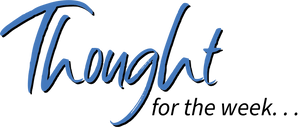Tap Cognitive Science to Keep Students Learning in the Final Weeks
As we near the final weeks of the school year, we might struggle to have students remain engaged in their learning. Yet, the time we have with students at this point in the year can be exceptionally rich—if they remain focused and challenged. We know our students; we have built relationships and established trust. Some of the best learning of the year should happen now. Further, if students remain focused and engaged, we can avoid many behavior challenges and distractions that often accompany this time of the year.
Fortunately, there are several strategies based in cognitive science upon which we can draw to maintain momentum and stimulate continued learning. Here are six strategies to consider and tap.
Coming attraction: What now? Often referred to as “priming questions,” we can capture students’ attention with questions that preview new learning and pique their curiosity. As examples: “How can knowing fractions help you to become rich?” Or “How can listening become a personal superpower?” The questions can also be used to define the purpose of new learning. The answer to the question becomes something to actively discover rather than information to be passively received. Questions can also be more interesting than a learning goal statement. The questions become even more useful when we pause instruction periodically and invite students to describe their evolving knowledge and understanding of the question and what it means.
Confounding: What’s this? We can break up routines by adding mystery, conflict, novelty, and surprise to capture attention, generate excitement, and pique curiosity. As examples, we might provide just enough information on a topic to pique students’ interests. We can offer a short overview without sharing too much. We might invite students to speculate, question, and imagine. We might surprise students with the arrival of an unannounced visitor with a problem or mystery for the class to solve. We might unveil a picture that invites discussion or investigation. We can allow students to “light the path” to discovery as we respond strategically to their interest, curiosity, and growing understanding.
Connecting: What’s new; what’s old? After we have introduced a new piece of content or skill and students have grasped the essentials, we can challenge them to connect their new learning to what they have already learned. For example, we might have students form small groups to discuss connections with past learning. We can provide them with a resource packet to assist their efforts. For example, we might share a syllabus, a description of past learning standards, past assignments and assessments, and other related items. After revisiting their learning and discussing connections, groups can report the connections they have identified. Meanwhile, we can monitor what may be missing and may require reteaching. Not only will students make important connections, but we will also be stimulating and extending their recall of past learning.
Consolidating: Can you teach it? One of the most effective ways to ensure students learn and retain new content is to have them teach each other. Students might be allowed to choose what aspect of new learning they would like to teach. Their instruction might be to small groups or the entire class, depending on variables such as the time available and the topics to be taught. Teaching others what they have learned generates greater purpose for learning, more focused attention, more authentic responsibility, and increased integration of what has been learned.
Contemplating: What’s your question? Having students generate questions about what they have learned is a great way to increase comprehension, consolidate learning, and extend recall. Consider having students submit questions for possible inclusion on a future learning assessment. Of course, we may need to teach how to frame a good question, including how to encourage depth of response and elaboration. While it may not be realistic to include all the questions students submit, we might commit to a set number of questions from those submitted. Beyond the learning benefits of forming assessment questions, students are often eager to respond to what they and other students have submitted.
Collecting: What do you recall? We might periodically select content that we want students to solidify in their memories. Called retrieval practice, this activity has students list everything they can recall regarding a concept, skill, or topic they studied. Students might make a list, create a mind map, or verbally discuss what they can remember. We can invite students to fill in each other’s recollection gaps. Multiple studies have shown retrieval practice to be exceptionally effective in building long-term memory and improving recall.
The final weeks of the school year can be a time of disruption and distraction—but they can also be a prime time for learning. It is a good time to tap what cognitive science has to offer to support our efforts and our students’ growth.















